
Cresting the ridgeline that overlooks Mesão Frio, we left the vineyard-covered slopes of the Douro Valley behind us and headed to Armarante on roads lined with forests and fields. Crossing the bridge over the Tâmega River we viewed a beautiful scene reminiscent of a Romanesque cityscape painted by a 16th century Dutch master, uniquely different from the other Portuguese towns we had visited so far, the ambiance and architecture more northern European than Iberian. Surprisingly for Portugal, this historic town, one of the oldest in the north of the country was never centered around a castle, even though the site has been continually inhabited since its founding in the 4th century BC.


Colorful, whimsical pedal boats were beached on the riverbank, waiting for customers, as we walked along the path that followed the river into town. It ended in a parking lot full of craft vendors, at the foot of a grand triple-arched stone bridge that spanned the river. Here in 1809 the brave citizenry barricaded the bridge and repelled Napoleon’s Army for fourteen days during the Peninsular War, before their village was looted and razed. With a bag of freshly roasted chestnuts in hand, we strolled through the craft fair and came upon a grandmotherly woman with a table full of doces fálicos (literally “phallic sweets”) for sale. Bolos de São Gonçalo, Saint Gonçalo cakes were created and named after a beloved 13th century hermit, and the town’s patron saint, who slept in a forest cave for many years. Yep, boldly-sized penis-shaped baked goods! Best to just allow your imagination to run wild here and you’ll visualize them perfectly. It’s thought that this tradition originated from a pagan fertility ritual and was syncretized by the church to encourage more folks to follow Christianity. It’s nice to think some early church leaders had a good sense of humor.



I digress here, but it’s my blog and I’m occasionally irreverent. What’s the back story for such cherished tradition? While he bathed in a stream, was he happened upon by a group of women foraging for firewood? His manhood was suddenly legendary, the talk of the village. “I hear the hermit has a pretty good package.” “Yes, I saw him. He’s hung like a horse.” “Someone else said it hung to his knees!” And so, legends begin and grow. Did mothers, aunts and neighbors make idols of his manhood to encourage young newlyweds who couldn’t conceive quickly? Perhaps some women made a pilgrimage to his cave in the middle of the night in the face of their husbands’ inadequacy, thus ensuring the birth of an heir. What tales do mothers tell their daughters as they stand at their kitchen tables kneading the balls of dough? Could Amarante have been the inspiration for Chaucer’s Canterbury Tales?

At the foot of the bridge stands the grand Igreja de São Gonçalo. Yes, as if naming a pastry after him wasn’t enough, he’s also celebrated on January 10th, plus there’s a June festival in his honor. Will the sacrilege ever stop, we wondered with a smile. Unfortunately, a military dictatorship came to rule Portugal in 1926. Not nearly as liberal as the early church leaders in Amarante, and definitely insecure in their masculinity, they outlawed the pastries and festival as “obscene and against public morals.” Like resistance fighters, the practice went underground and Bolos de São Gonçalo were made and exchanged behind bolted doors, in order to hide from the dreaded pastry police! Wait, I just make that up! The tradition was allowed again after the last dictatorship fell during the Carnation Revolution in 1974, which eventually led to Portugal becoming a democracy again. The June São Gonçalo Festival is now one of the most popular events in Portugal.


Dating from the mid-1500s, the interior of the church is known for its gilded pulpits and baroque altar. It also features an amazing organ held aloft by sculptures of fish-tailed giants. São Gonçalo’s tomb stands in a side chapel. His stone features have been rubbed smooth over the centuries by folks hopeful for love and marriage. The cloisters attached to the church have been renovated into the Museu Municipal Amadeo de Souza-Cardoso, which is dedicated to the works of many famous artists and writers born in Amarante.


Included amidst the artworks on exhibit are the “The Devils of Amarante,” two near life size, carved wooden statues of he and she devils, with exaggerated sexual features. They are thought to be of Nubian or Far East origin and gifted to the monks of the convent by a sailor or merchant returning from a Portuguese colony sometime in the 1600s. These beloved mafarricos, tricksters, were used by the monks to frighten their congregation before confession. To the horror of the monks, French soldiers dressed the devils in religious vestments and paraded them through the streets before putting the statues and the town to the torch in 1809. The distraught friars quickly tasked a local craftsman to replace them. This troubled pair was then later ordered expelled from the walls of such a sacred institution by King D. Pedro V, The Hopeful, when he visited sometime in the mid-1800s. They were hidden away until 1870, when the Archbishop of Braga, José Joaquim de Moura, who thoroughly lacked a sense of humor, ordered them burned again! The Prior of the Convent didn’t have the heart to destroy this cherished pair, but ordered the male statue be castrated. A local wood sculptor was tasked with reshaping the she-devil to be less offensive. Somehow Alberto Sandeman, of port wine fame, discovered them and shipped them to London to promote his business. Outraged that their mafarricos were sold and their culture misappropriated, the citizens of Amarante waged a decades long campaign to have them returned. Finally, after much public anguish and through the intercession of the Portuguese Minister of Foreign Affairs, their return was celebrated with a parade through the streets and the crowd singing “Aí vem os Diabos!”, “Here come the Devils!” They are still celebrated every August 24th.



Crossing the narrow bridge, we were surprised that cars are still allowed to use it. We were in search of a café with tables overlooking the river. The cobbled lane seemed to be lined with every other shop window displaying various sizes of doces fálicos. Cocks, dicks, peckers, peters, schlongs, willies and weinies, from three feet long to bags of full of thumb sized ones for wedding shower gifts, and every size in between were proudly displayed, front and center. Does size really matter? Seems this quaint village is possessed and has been wrestling with this archaic question for centuries. Why is this religious monk associated with having a big one? Really, there must be something in the drinking water.

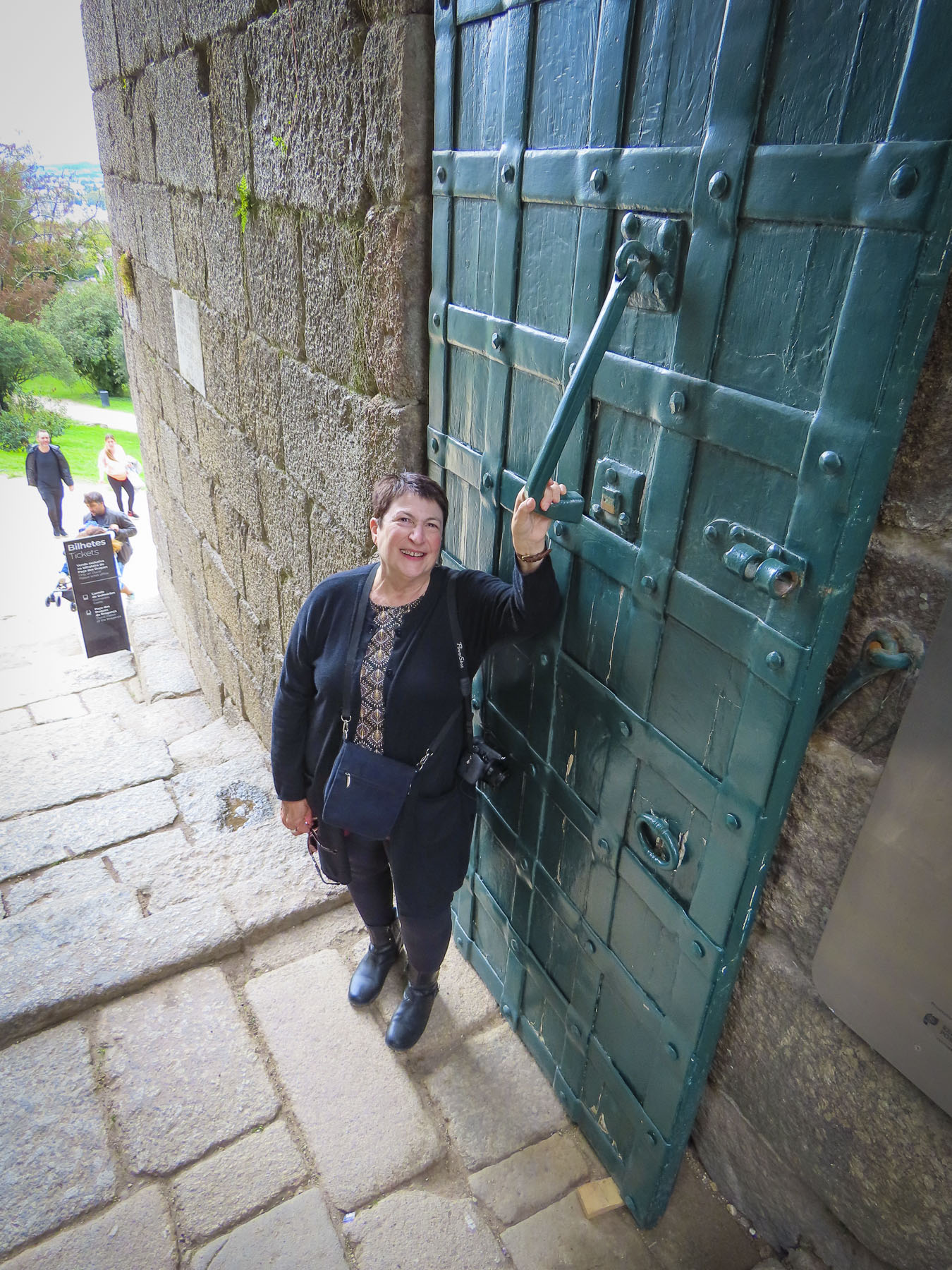
After our adventurous morning in Amarante, the afternoon in Guimarães seemed tame by comparison. The day was still mild, but the sky had greyed by the time we reached the Castelo de Guimarães. An impressive shield-shaped castle with eight towers and a massive keep at its center, it crowns a small hill. It was built in the mid-900s on the orders of Countess D. Mumadona Dias to protect the nearby town and monastery from Viking raids, which did torment northern Portugal in the 10th century, and Moors who were contesting the area. In 1095, when Portugal was still part of Spain, the King of León and Castile gave his daughter D. Teresa in marriage to the French nobleman, Henry of Burgundy, as a reward for his heroic efforts to drive the Moors from Northern Spain. The castle and lands extending to Porto were part of her wedding dowry. It is believed Teresa gave birth to Afonso Henriques in the castle. An advocate for Portuguese independence, he would later crown himself the first King of Portugal in 1139, establishing Guimarães as Portugal’s first capital, after defeating his mother who allied herself with the King of León and Castile, her father.


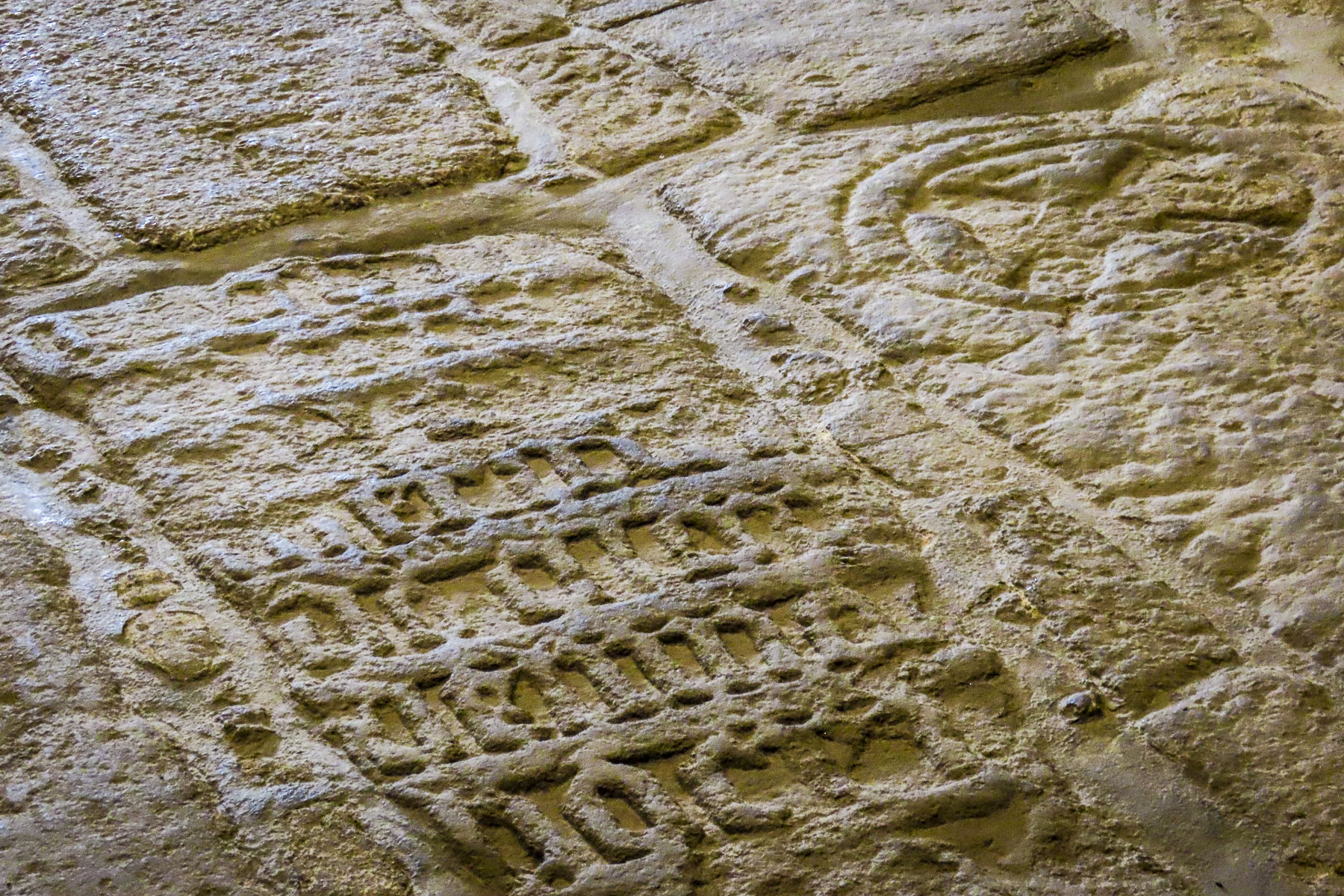
The Igreja de São Miguel do Castelo is set a short walk down the hill from the castle’s entrance. A rather austere medieval church, its floor is created of gravestones of ancient nobility. Their carved stone features have slowly been worn away over centuries by the feet of the faithful. It is also believed that Afonso Henriques was baptized here.

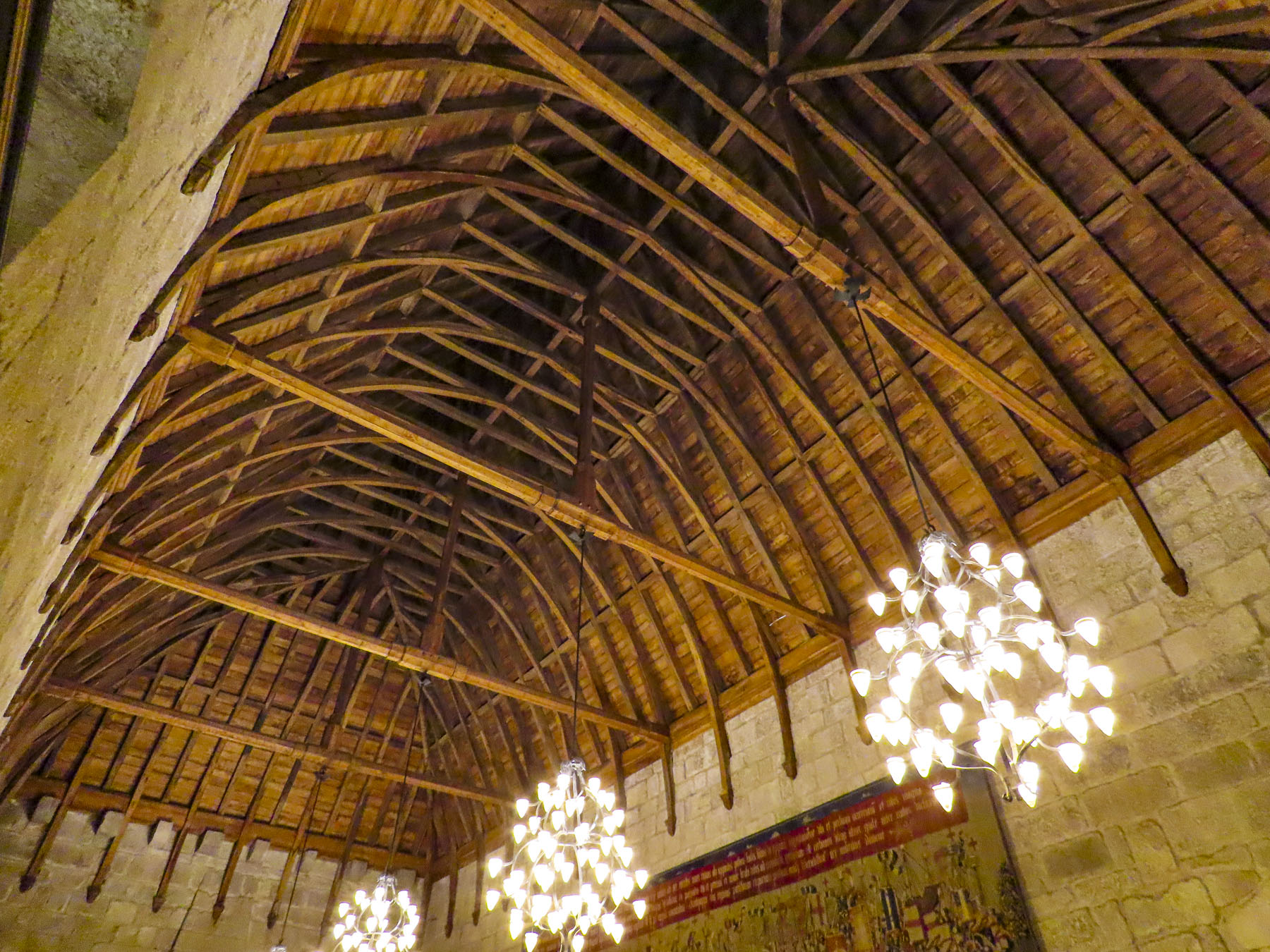


Farther down the hill stands the 15th century Paço dos Duques, Ducal Palace, with an exquisitely crafted cathedral ship’s hull ceiling. The former royal residence is full of exquisite renaissance era artworks, castle furnishings, and priceless items from the Far East. Large Flemish tapestries celebrating military victories hang on the walls. The collection represents the vast wealth flowing into the country from its far-flung colonies during the age of exploration. Portugal was at the time a superpower.


The Trovador City Guest House was our home for the next two nights. Set on a small square across from the historic district, it occupies three historic buildings which have been keenly modernized. For €43 a night in October it was a tremendous value, and we were able to use one of the hotel’s parking spaces on the square for free.


After dropping our bags in the room, we walked along cobbled lanes that twisted about through the old town. Narrow centuries-old buildings, many three or four stories tall with colorful Azulejo tile facades and shallow wrought iron balconies, lined our way. Our destination was the Padrão do Salado, a 14th century monument, then on to Largo da Oliveira in the Centro Histórico. It commemorates the Battle of Salado in 1340, when combined Spanish and Portuguese armies defeated a larger Muslim force in southern Spain. It’s an arched rectangular structure open on four sides. A stone roof shelters a tall cross with the Portuguese Coat of Arms at the base.
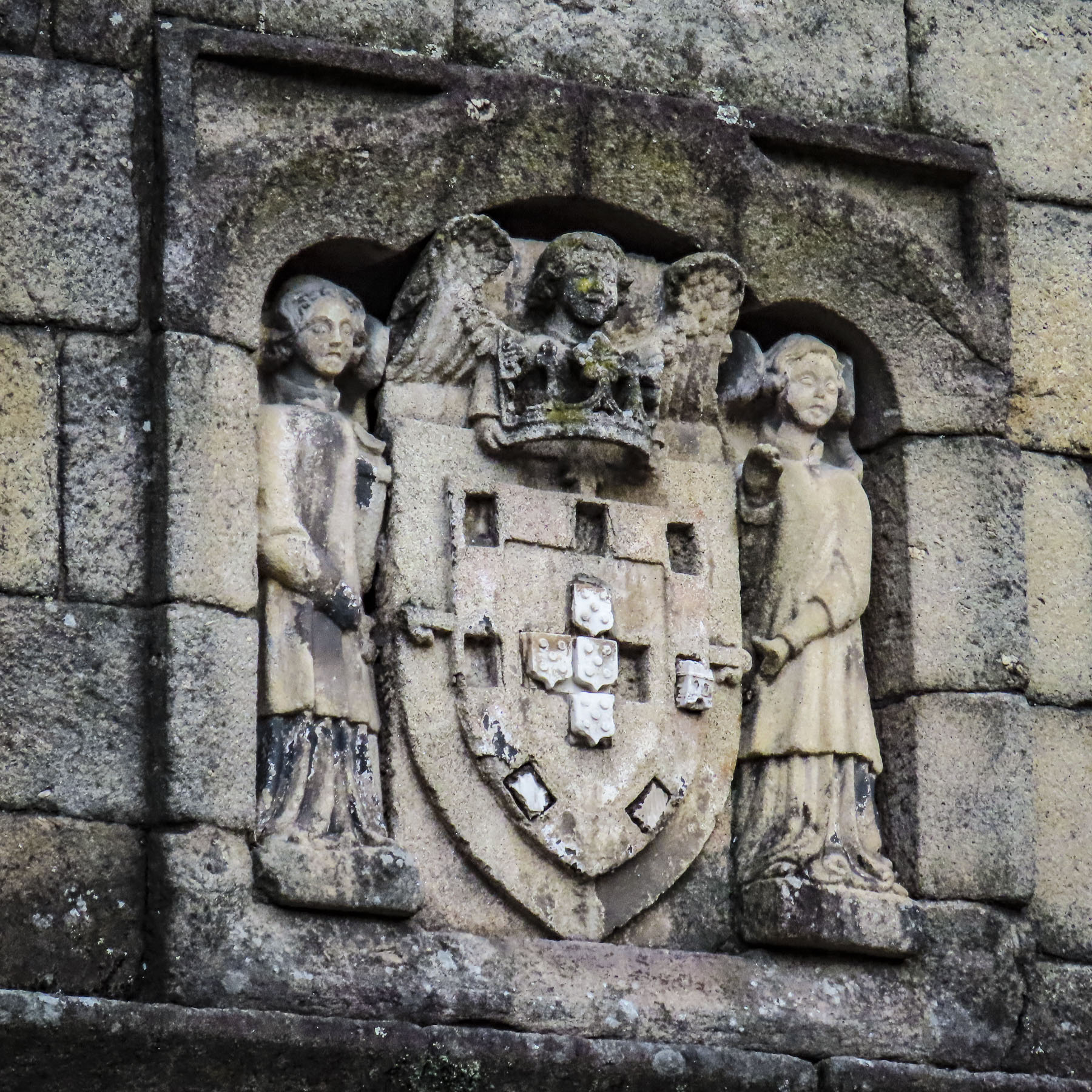


Adjacent to it stands the Igreja de Nossa Senhora da Oliveira. In 949, the church was built as part of a Benedictine monastery financed by Mumadona Dias, the same Countess responsible for Guimarães Castle. She’s an interesting character in her own right. Refusing to remarry after her husband Count Hermenegildo González died, she ruled alone an area from the Minho River to Coimbra, which would eventually become the foundation of Portugal. Suddenly the square erupted into a cacophony of music, when a group of folk singers joined a group of accordion players and burst forth with song. We grabbed an open table on the plaza, ordered beers, and tapped along.


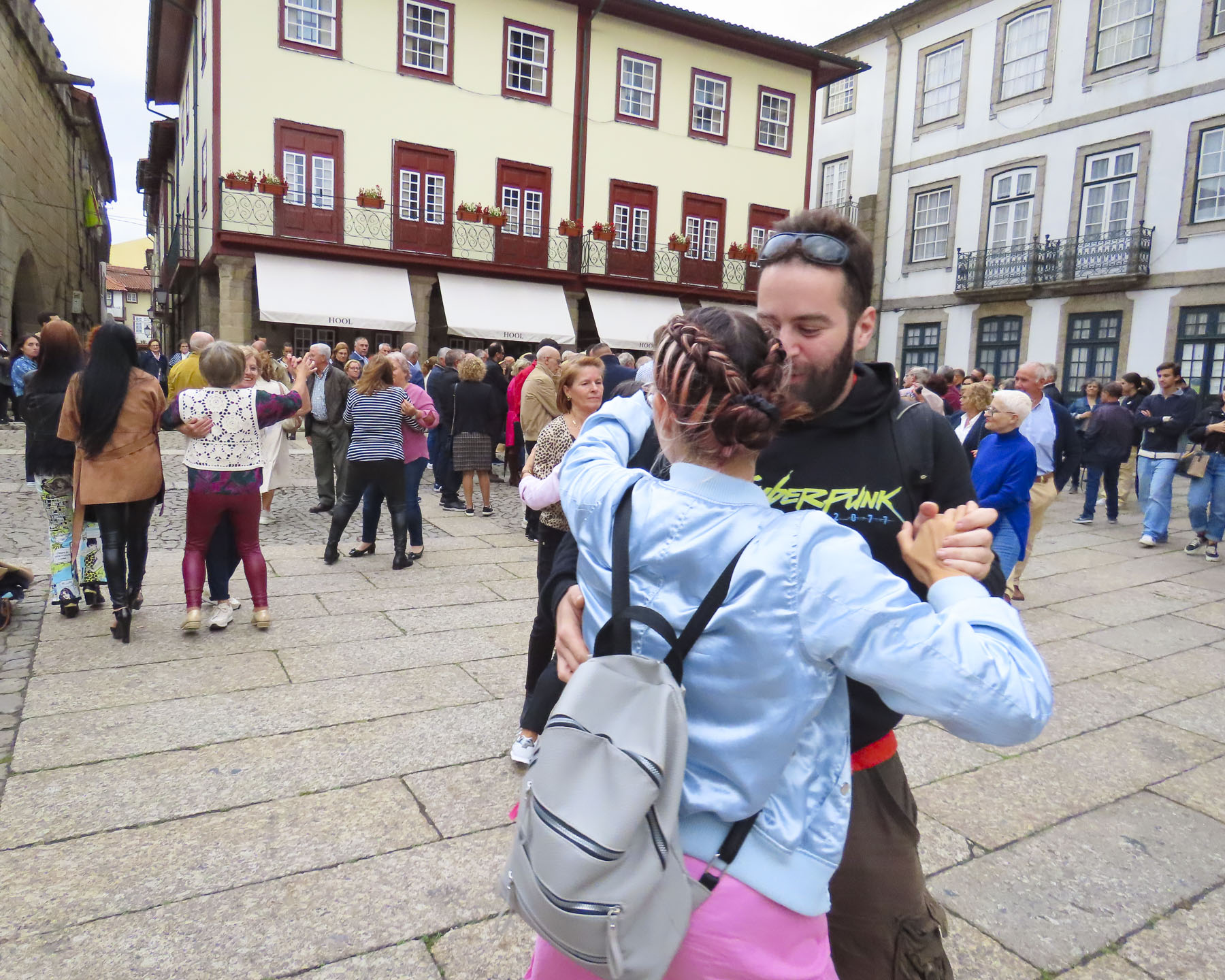
The next morning, we headed to see the espigueiros, stone granaries, of Soajo and Lindoso. These really are off the beaten track destinations in the far north of Portugal near the border with Spain. It’s a remote mountainous region that includes the Parque Nacional Peneda-Gerês, an area where wolves still roam. The sunny days we had at the start of our trip slowly evolved into rain showers, and then downpours. I hesitate to say unfortunately because we’ve been quite lucky over the years concerning adverse weather. It did slow us down a bit, and I do prefer blue skies in my photos, but moody works too. Oh, and there was that funky windshield wiper on our rent-a-wreck!



The vineyards that we became so accustomed to earlier in our trip disappeared in this corner of the Minho region. Thick forests that grew to the road’s edge were occasionally interrupted by verdant pasture lands. Turning off the N203 we followed the sign for Soajo down a narrow road that crossed the Limia River. Three loose horses grazed along the road’s edge, oblivious to our passing, their pasture and owner out of sight. Farther along, a large bull eyed us from his enclosure. Signs for hiking trails to two still-standing, ancient stone bridges, the Ponte Medieval de Ermelo and Ponte Romana, attest to the long history of the area. We parked in the municipal lot.

The unique stone granaries are perched dramatically atop a rocky outcrop behind the village’s school. From a distance the twenty-four stately stone structures, elevated several feet off the ground, could be confused for ancient sarcophagi of long dead Kings and Queens. The unique structures, now textured with lichen, were built to keep vermin away from farmers’ harvested crops. Evidently effective, several were still being used. Though they appear much older, the espigueiros were constructed in the 18th and 19th centuries.


The rain came down harder as we sought warmth and hot coffee at Seara Nova, the only café open mid-week during the slow season. “Ah, he’d like an Americano,” my request broadcast across the café with a smile to her pal stationed at the espresso machine. “As much as I try to convince him otherwise, he always does,” my wife apologized as she ordered a cappuccino. It’s not that I don’t enjoy an espresso, all the coffees in Portugal have been great, but they just don’t have enough liquid in them to satisfy my java cravings. And like the Brits with a proper cup of tea, I’m inspiring the uninitiated in how to serve a good cup of joe. Just top that cup of espresso off with hot water to the rim of the cup and its perfect. Smiles all around. I was not disappointed. Our two cafes and pastries came to less than €4.


Warm again and relieved that the rain had stopped, we drove to Lindoso to see their espigueiros and adjacent castle. Here, about fifty granaries sit on a gentle slope that leads to the town’s castle. The castle’s proximity was an added bonus and we quickly scampered up the hill to investigate. It was built in the 13th century during the reign of Afonso III to defend Portugal’s northern frontier from Spanish invasion.




The border in fact is just a catapult shot away. It was renovated in the 1600s to include an outer star-shaped bastion defensive wall, with a moat and drawbridge, along with watchtowers and machicolations for pouring hot oil on any besiegers. Despite all those impressive defensive features, Spaniards captured it for a brief time. From its walls we watched a moody mist begin to fill the valley below.
We heard Braga calling.
Till next time, Craig & Donna


